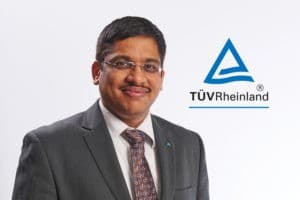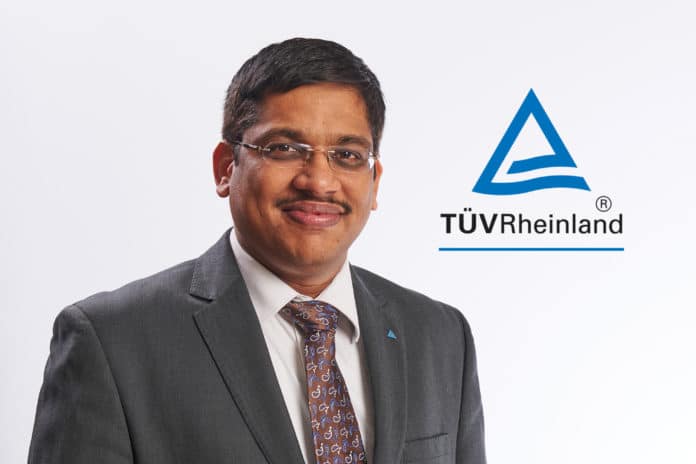Internet of Things (IoT) has begun to shape the future of many industries by generating an unprecedented amount of data. Kalyan Varma, vice president of TÜV Rheinland India in an interaction with Electronicsforu.com Network shares how IoT is all set to disrupt the ecosystem with the proliferation of humungous data. Excerpt follows…

Q) In your opinion, which are the top 3 technologies that are shaping the future of IoT? How are they influencing the future of IoT?
Service providers and enterprises have been looking at IoT as a key enabler to drive digital transformation and unlock operational efficiencies. Advances in Artificial Intelligence coupled with ubiquitous networks and real-time communication are enabling exponential growth inefficiencies generated by IoT. The IoT market is expected to grow steadily as billions of devices, systems and services become connected. As per the recent market research, in terms of the market size, IoT spending is expected to register 15.4 per cent y-o-y growth to reach US$1.1 trillion by 2025.
IoT cannot thrive without effective and affordable wireless connectivity, interoperability, and common standards. We believe 5G has the potential to make a ground-breaking impact on the way in which future IoT ecosystems are designed, especially in the areas of scalability, latency, reliability, security and the level of individual control on connectivity parameters.
Wi-SUN, LoRaWAN, and Sigfox are some of the emerging technologies designed for large-scale outdoor IoT/ wireless communication networks and helps in developing wireless communications for utilities, smart cities, and IoT. It targets key Internet of Things (IoT) requirements such as bidirectional communication, end-to-end security, mobility and localization services. IoT will develop new relationships between people, technologies and the environment which will make our lives easier.
Q) Can you throw some light on Wi-SUN technology and how TUV Rheinland is working on that?
Wi-SUN is an optimized mesh network providing low-cost, energy-efficient and secure radio communication technology with encryption and authentication mechanisms. The mesh protocol is based on the IEEE 802.15.4g SUN standard.
Our qualified experts with comprehensive knowledge of wireless technologies provide extensive Wi-SUN testing services from a single source. We test for interoperability as well as compliance with relevant standards and regulations. Our one-stop services enable customers to take their products for faster market access across the world. Our test harness for Field Area Network (FAN) product testing is being used widely in the Wi-SUN Alliance community. In FAN profile testing, we provide physical (PHY) conformance testing, PHY interoperability testing, and FAN conformance testing.
Q) Between the Cellular and NB-IOT/LPWA families of wireless technologies–which one are you betting on? Why?
So far, Cellular is dominant in voice and data for the consumer spectrum where short-range technologies were dominating industrial and commercial spaces. Speed, power, and affordability are the key factors for short-range technology success.
To build a successful IoT ecosystem, it is required to match connectivity. Several different technologies are being developed and deployed — including LTE-M and NarrowBand-Internet of Things (NB-IoT) — to support such IoT requirements. As a low power wide area (LPWA) is expected to have a significant impact on the growth rate of future IoT innovation.
Q) How’s the development of standards (or lack of it) affecting the adoption of IoT?
Technologies are always ahead of standards. Every technology will carry certain risks. Standards and regulations will definitely slow down the implementation of new technologies. Today, we still have not established and validated the requirements for 5G in many countries.
Q) How ready is India’s tech eco-system to develop and deploy IoT solutions?
Increased penetration of affordable devices, combined with cloud computing, analytics, and rising consumer expectations is driving the rapid growth of the IoT market. As per the recent market research on the IoT landscape, India will be a front runner in IoT adoption in the Asia Pacific (APAC). The IoT market size in India is expected to grow at a rate of 62 per cent CAGR and reach US$9 billion by 2020. The number of IoT connections is expected to grow at a CAGR of 137 per cent, increasing from US$60 million in 2016 to US$1.9 billion in 2020.
India is matching the pace in adopting new technologies such as IoT, 5G, AI, and cloud to drive new business models. The Government of India has introduced various policies and initiatives such as Digital India, Make in India, Smart Cities, etc. to leverage the benefits of these disruptive technologies in various sectors. Additionally, the rise of the tech-savvy consumers along with increasing smartphone and mobile internet penetration is driving consumer IoT applications in the Indian market.
Q) Do you foresee India’s tech industry developing its own IP and branded products/solutions in the IoT arena?
A lot of global technologies are accessible to us and certain customization to suit Indian market risks is available. Many start-ups in India are using these technologies such as IoT, 5G, and Artificial intelligence to create new and innovative applications. TÜV Rheinland’s LoRaWAN Certification program will guarantee that devices perform as per the specified standard. It will help device manufacturers and network operators to explore global markets.
Q) What do you think will be the success factor for a universally consistent IoT technology adoption?
The key success factor would be the interoperability of technologies. As discussed above, there are various technologies already available in the market and at some point in time, these technologies need to communicate with each other and also with other wired technologies. If we can achieve one universal communication protocol layer which is common across industries, it will provide a strong boost to adopt IoT solutions in wider applications.
Q) How do you see the role, technologies like AI/ML will play in the evolution of IoT solutions?
Artificial Intelligence (AI)/ Machine Learning (ML) is playing a vital role in revolutionizing the IoT solutions. It represents an unprecedented opportunity for the enterprise. Within the broad field of artificial intelligence, machine learning is poised to make the greatest impact. It has the potential to enable fast, intelligent decision-making—either in support of human intelligence or in place of its own. Any complicated task can achieve a level of accuracy and efficiency beyond the capabilities of the workforce.
The real advantage of connected devices and data mining would be visible to common people once IoT solutions are empowered with AI. Especially in the areas of health care, smart-home, and smart-city applications, AI/ ML can make a difference. These transformational technologies will bring change in our professional and personal lives, and society as a whole.
Q) What’s your opinion on the state of security available for IoT solutions? How do you see the evolution from here on w.r.t threats and counter-measures?
As I mentioned earlier, every new technology will bring new risks to it. We can say, IoT solutions will bring more privacy and security risks. We need to have countermeasures to overcome these issues. Due to rapid technological advancements making regulations and implementing them are more challenging. One-time testing, validation for privacy or security will not solve the problem. The solutions need to be inherently designed to fulfill such requirements. It is also necessary to categorize the level of protection needed based on applications to minimize complexity.
There are various regulations floating around such as German Data Privacy Regulation (GDPR); California Companion Privacy and Cybersecurity Bills, ETSI EN 303 645 – cybersecurity for consumer Internet of Things. Indian Telecom Engineering committee (TEC) cybersecurity team is working with ITU SG-17 related National Working Group activities.
Q) W.r.t. edge vs cloud–where do you think will we see faster development in the next year or two?
The growth of connected devices is predicted to increase to 22 billion by 2025 as per the estimates from IoT analytics. Data is intricately linked to the exponential growth of these connected devices. The main reason why businesses are preferring Edge over the Cloud is due to reduced latency and cost-effective. The main advantage of Edge computing is speed. The IoT concept predicts quick responses for data processing, for example, self-driving or autonomous cars.
Edge and Cloud Computing will not necessarily compete, instead, the two technologies can complement each other. This will depend on the unique need of businesses. They should maintain the right balance between cloud and edge devices for processing.
Q) Any thoughts on where to go edge versus where to go cloud?
As mentioned earlier, we need both. In the future, IoT solutions will essentially see more advantages with Edge because of its remote last-mile connectivity. There are still challenges with data speed and network coverages which will hinder the cloud. To some extent, these challenges will be addressed by Edge with respect to IoT solutions.
Q) Any latest development at TÜV Rheinland that has happened in the past few months?
TÜV Rheinland has been selected by the LoRa Alliance® to be the first LoRa Alliance Authorized Test House in India and will offer services for testing end devices in IN the 865MHz-867MHz frequency band allocated for LoRaWAN operations in India.
We have also achieved accreditation from ‘Wireless Smart Ubiquitous Networks’ (Wi-SUN). TÜV Rheinland has demonstrated its commitment to the development and evolution of this standard technology to create a truly interoperable open network ecosystem. Our experts share extensive experience in smart utility networks to support manufacturers with testing services for their Wi-SUN compatible products.










